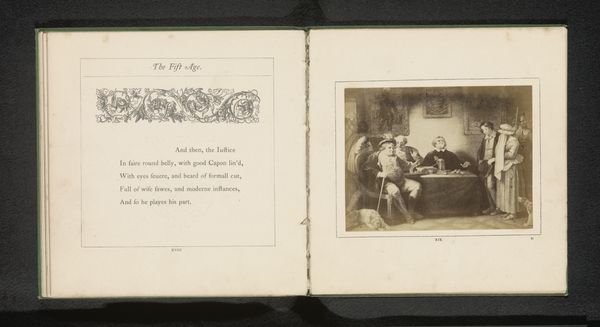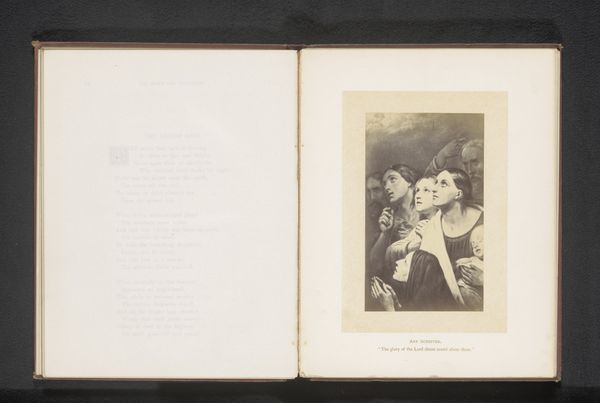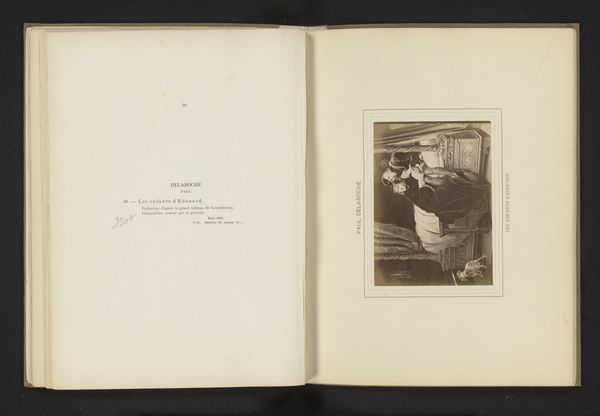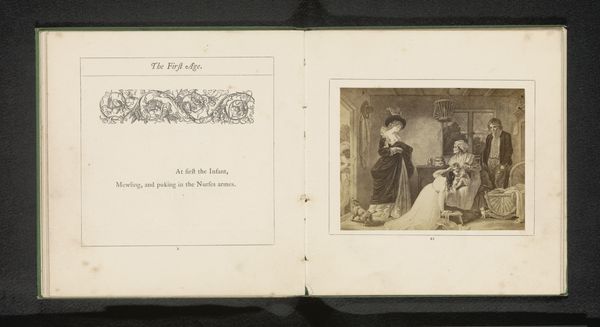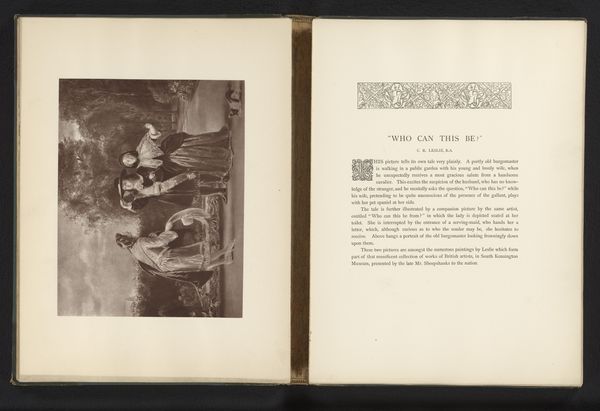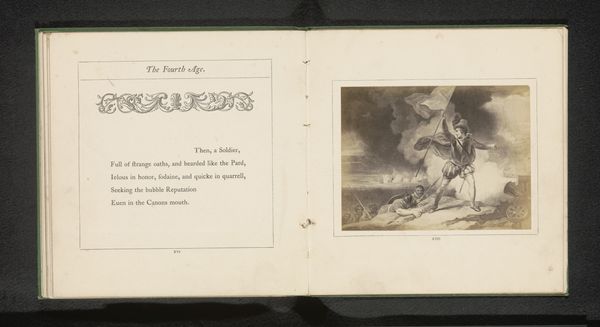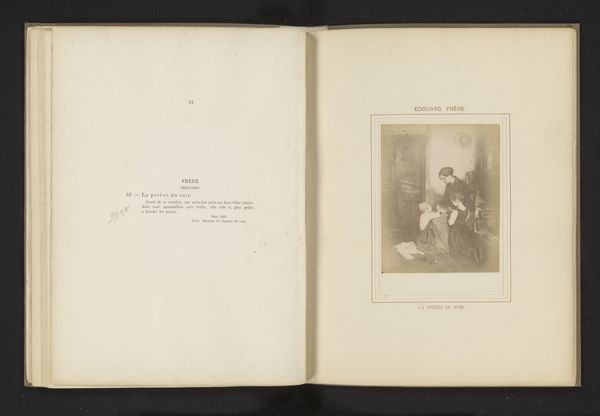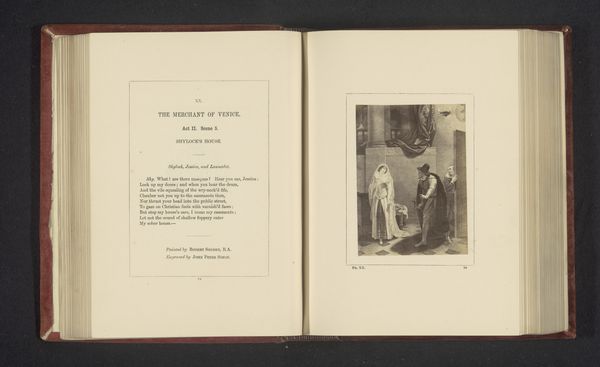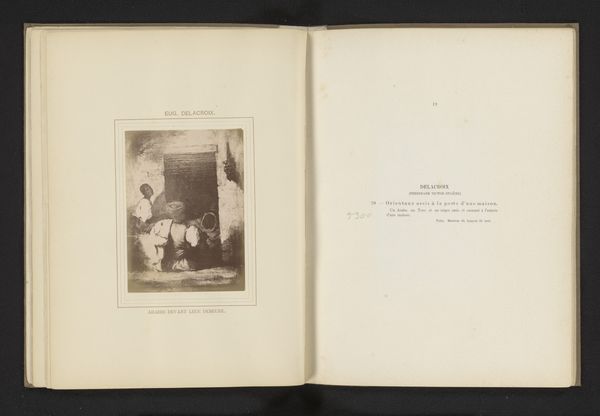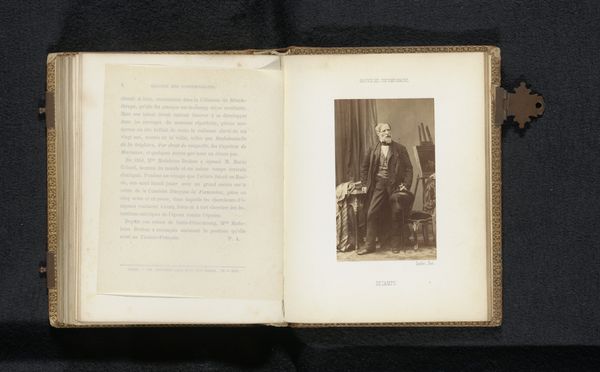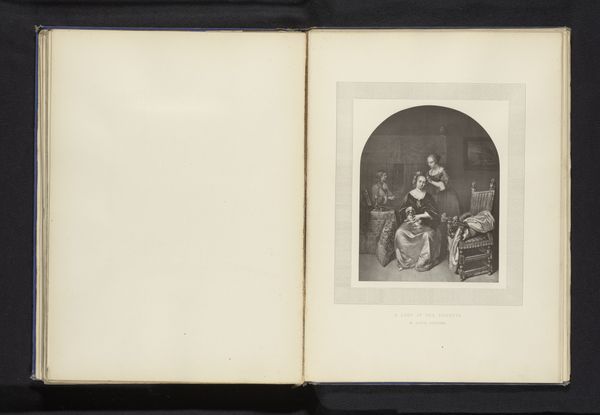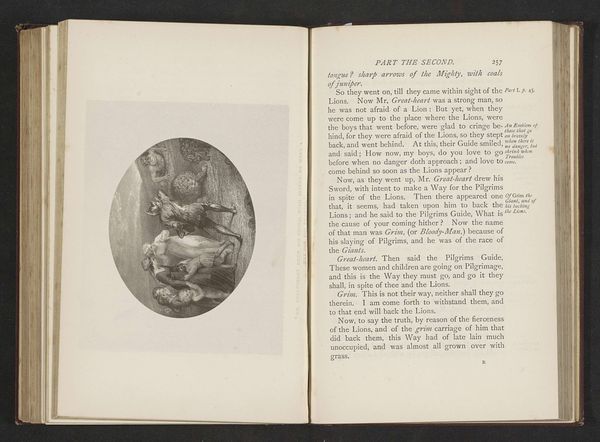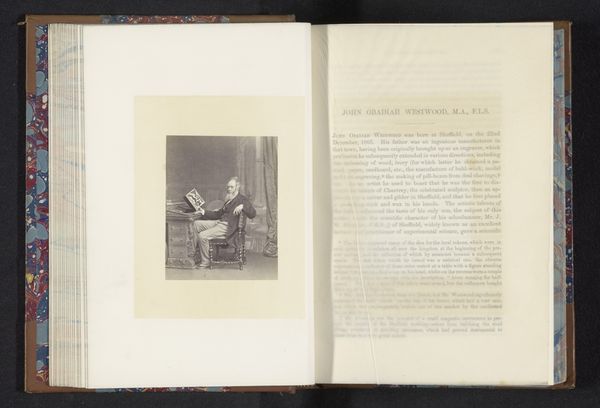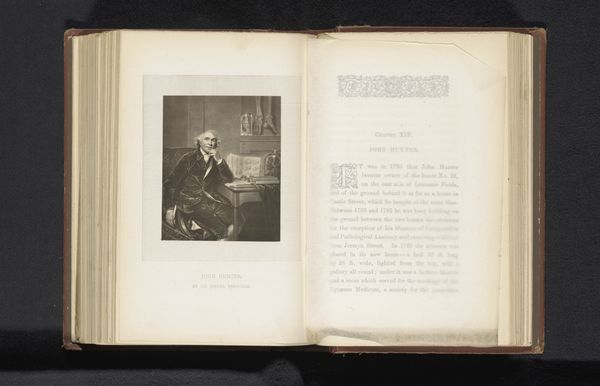
Fotoreproductie van een prent, voorstellende een jongeman schrijft een brief in een interieur before 1864
0:00
0:00
Dimensions: height 77 mm, width 98 mm
Copyright: Rijks Museum: Open Domain
Editor: This is a reproduction of a print, dating from before 1864. The artwork depicts a young man writing a letter indoors, and it’s interesting how photography is used to reproduce older printmaking techniques. How do you interpret this scene through its historical and social context? Curator: This piece, with its blend of photography and printmaking, presents a fascinating commentary on the democratization of art. Consider the period – mid-19th century – when photography was rapidly changing art's role in society. How does the act of reproducing a print through photography affect its perceived value and accessibility? Was this about wider circulation, or something more? Editor: That's interesting! So it is not about having art more easily available? What would it be more? Curator: Well, if we look at who gets to dictate what is considered ‘art’, reproductions shift the balance of power. Photography challenges traditional artistic hierarchies. Reproductions mean it becomes a cultural artefact divorced from the traditional elite art structures. It lets broader society engage. Consider its narrative themes rooted in Romanticism and genre painting – how might those resonate differently depending on where the viewer is positioned socially? Editor: That makes so much sense! The act of photographic reproduction becomes an act of cultural reinterpretation. It questions what’s valuable about an artwork - is it the original artist's hand, or the story it tells? Curator: Exactly. And what does it mean for institutions like museums? Reproductions allow them to widen what and whom they display, reaching people who might not even visit! I think it invites us to question power dynamics of art ownership and cultural expression. Editor: I hadn't considered all the different angles of societal impact until now, especially the shift in accessibility. Thanks for a great way to consider this print. Curator: Likewise, it’s enlightening to see how you've approached the artistic message itself.
Comments
No comments
Be the first to comment and join the conversation on the ultimate creative platform.
